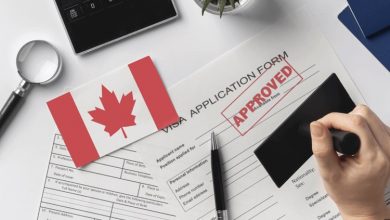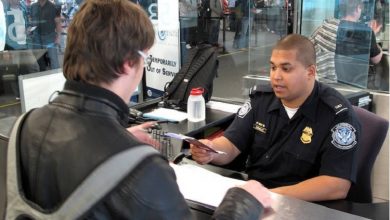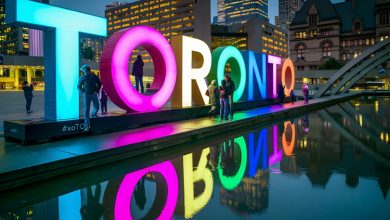In travel experiences, the Canadian Visitor Visa stands as a unique thread, weaving stories of exploration, connection, and cultural enrichment. In other words, a lead on how to get your Canadian Visitor Visa approved becomes important. You see, beyond its utilitarian function as a travel permit, this visa is a testament to an open-armed welcome extended by Canada.
Hence, inviting global citizens to immerse themselves in the mosaic of its landscapes, traditions, and opportunities. In this guide, we embark on a journey to understand how to get your Canadian Visitor Visa approved; its purpose, its potential for this exploration of experiences, and the subtle finesse that define its limitations.
Understanding the Canadian Visitor Visa
Essentially, the Canadian Visitor Visa, often referred to as a Temporary Resident Visa (TRV), is a document issued by the Canadian government that allows foreign nationals to enter Canada for a temporary stay.
Whether you’re an avid adventurer pursuing the marvels of Banff National Park, or even for an emergency health issue, maybe a cultural enthusiast eager to stroll through the vibrant streets of Toronto, or even a business professional attending a conference in Vancouver, the Canadian Visitor Visa avails you to these myriads of possibilities.
An important reason you should be glued to be tutored here on the steps on how to get your Canadian visitor visa approved. These are;
Purpose of the Visa
- Tourism and Exploration: One of the primary purposes of the Canadian Visitor Visa is to facilitate tourism. In the same vein, it’s an invitation to explore the vast and varied landscapes, from the rugged coastlines of Newfoundland to the serene lakes of Alberta.
- Visiting Family and Friends: For those separated by borders, the Canadian Visitor Visa provides an avenue to reunite with loved ones, fostering connections and strengthening bonds.
- Business Engagements: Entrepreneurs, professionals, and individuals attending conferences or business meetings can leverage the Visitor Visa to engage in economic activities within the country.
- Cultural and Educational Pursuits: The visa extends to those seeking cultural exchange, educational programs, or short-term courses, contributing to a vibrant and diverse learning environment.
Limitations and Realities
While the Canadian Visitor Visa is a gateway to enriching experiences, it comes with its Cons
- Temporary Stay: The visa is explicitly for a temporary stay, with a defined validity period. More so, It’s essential to adhere to the approved duration for compliance with Canadian immigration laws.
- No Employment Without Authorization: Unless specifically authorized, the Canadian Visitor Visa does not permit engaging in any form of employment. Understanding and respecting these boundaries is crucial to avoiding legal complications.
- Compliance with Laws: Next, visitors must adhere to Canadian laws and regulations during their stay, respecting the cultural, social, and legal norms of the host country.
- Health Insurance: Though this is not a strict requirement, having adequate health insurance is advisable to cover any unforeseen medical expenses during the visit.
Necessary Documents and Requirements
- Passport and Photographs: A valid passport with at least six months’ validity beyond the intended stay. Also, recent passport-sized photographs meet specified requirements.
- Completed Application Form: Thoroughly fill out the Canadian Visitor Visa application form, ensuring accuracy and completeness.
- Proof of Financial Support: Bank statements demonstrating financial capacity to cover travel expenses.
- Proof of employment: income, or sponsor’s financial support if applicable.
- Travel Itinerary and Accommodation Details: A detailed itinerary of your planned stay, including accommodation arrangements.
- Purpose of Visit Documentation: For tourists, a compelling explanation of planned activities and attractions to be visited.
For business professionals, an invitation letter or details about the business engagements. - Strong Ties to Home Country: In detail, show proof of ties such as employment letters, property ownership, or family connections
- Language Proficiency: Well, depending on the purpose of the visit, proof of language proficiency may be required
- Biometric: Here, provide biometric information, including fingerprints and a digital photograph.
- Health Insurance: Though not mandatory, having health insurance for the duration of your stay is highly recommended
- Police Clearance Certificate: A clean criminal record is essential. Provide a police clearance certificate if required.
Step-by-Step Guide to Filling Out the Application Form
- Access the Application Form: Visit the official website of Immigration, Refugees and Citizenship Canada (IRCC) to access the most recent version of the application form.
- Select the Appropriate Form: Depending on the purpose of your visit, choose the relevant form. For example; (IMM 5257 for visitors, IMM 1294 for family visits, etc.).
- Go through the Instructions carefully: Wait! before diving in, carefully read the instructions provided with the application form to understand specific requirements.
- Input Necessary Information: Put together all essential documents, including passport details, travel itinerary, proof of financial support, and any additional documents specific to your purpose of visit.
- Complete the Personal Information Section: Fill in personal details, including name, date of birth, gender, marital status, etc.
- Address Details: Make provision your current residential address, including the duration at the address and any previous addresses if applicable.
- Travel Information: Detail your planned itinerary, including dates of entry and exit, intended destinations, and accommodation details.
- Purpose of Visit: Clearly articulate the purpose of your visit, whether for tourism, family visits, business, or other reasons.
- Education and Employment History: Look through and complete the sections related to your educational background and employment history.
- Language Proficiency: If this is required, carefully demonstrate language proficiency through designated tests or certifications.
- Checklist Again: Thoroughly go through your checklist to ensure all required documents are well attached and assembled. Then sign the declaration confirming the accuracy of your information.
- Submit the Application: Pay the applicable fee and submit the application online. If that is the specified instructions.
Common Mistakes to Avoid When Applying For A Canadian Visitor Visa
- Incomplete Information: Ensure all sections of the form are filled accurately and completely. Leaving fields blank may lead to delays or rejection.
- Mismatching Documents: Verify that the information provided aligns with the details in supporting documents. Any discrepancies may raise red flags.
- Neglecting Important Instructions: Here, follow the instructions provided with the form carefully. Note that missing details or ignoring guidelines can result in complications.
- Wrong Dates and Details: Minor mistakes such as an inaccurate date can mar your application. Hence you are advised to double-check dates, addresses, and other details to prevent inconsistencies that may lead to confusion.
- Overlooking Additional Requirements: For specific types of visits, there may be additional documents required. Ensure you’ve covered all the bases. Leave no loopholes.
- Proofreading Carelessly: Take the time to thoroughly proofread your application. Typos and errors can be easily avoided with careful review.
- Ignoring Changes in Regulations: Be updated and stay informed about any updates or changes in immigration regulations. Outdated information can lead to non-compliance.
Understanding Financial Requirements
Clear financial planning not only supports your application. It also assures Canadian authorities that you have the means to cover your expenses during your stay, as well as reducing the likelihood of being stranded.
How to Strategically Plan Finances
Securing a Canadian visitor visa is both exciting and nerve-wracking. While meeting eligibility criteria and gathering documents are crucial, demonstrating financial stability is often the tipping point that determines your application’s fate. Worry not, budget-conscious traveler! This guide unveils strategic financial planning methods to convince visa officers you’re financially prepared for your Canadian escapade.
- Budget Before You Pack: Craft a detailed budget for your entire trip, factoring in flight costs, accommodation, transportation, food, activities, and miscellaneous expenses. Research average costs for your chosen destinations and activities, leaving buffer room for unexpected expenses.
- Banking on Transparency: Provide comprehensive bank statements showcasing consistent income and sufficient funds to cover your entire trip. Highlight savings accounts or other financial resources demonstrating you won’t be a financial burden on Canada.
- Proof of Employment Power: Secure a letter from your employer outlining your current position, salary, and length of employment. This solidifies your financial stability and ties to your home country.
- Sponsorships: A Helping Hand: If relying on financial support from friends or family in Canada, obtain signed sponsorship letters detailing their commitment to cover your expenses. Include their financial documents to verify their ability to support you.
- Embrace the Credit Check: Consider including a credit card statement showcasing responsible spending habits and available credit, if applicable. This adds another layer of financial reassurance for visa officers.
Common Risks To Avoid for a Smooth Journey
- Incomplete or Inaccurate Application Forms
- Insufficient Documentation
- Lack of Financial Planning
- Overlooking Proof of Strong Ties to Home Country
- Ignoring Changes in Regulations
- Lack of Preparation for the Interview
- Rushing the Application Process
Conclusively,
Your Canadian Visitor Visa application is not just a checklist of documents; it’s also a narrative that speaks to your ties, commitments, and intentions. By meticulously showcasing your employment stability, property ties, connections to family, social space and the community. Armed with this comprehensive guide and a dose of preparation, you’re now equipped to navigate the visa labyrinth with confidence. Remember, meticulousness, honesty, and patience are your key allies. So, chin up, adventurer, and prepare to unlock the door to your Canadian dreams!





